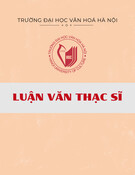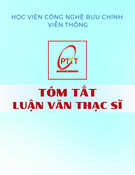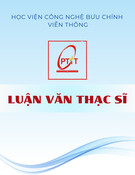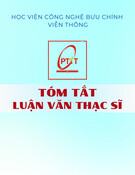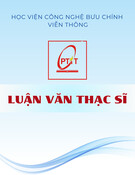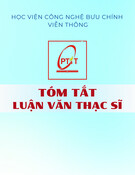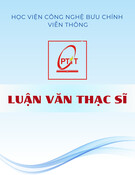
GRADUATE UNIVERSITY OF SCIENCE AND TECHNOLOGY
Tran Thi Nu
STUDIES ON EXTRACTION, PURIFICATION AND HYDROLYSIS
OF GLUCOMANNAN FROM MORPHOPHALLUS KONJAC K.KOCH IN
LAM DONG, VIETNAM AND ITS ANTI-DIABETIC ACTIVITIES
Major: Organic chemistry
Code: 9.44.01.14
SUMMARY OF CHEMISTRY DOTORAL THESIS
Hanoi – 2020
MINISTRY OF EDUCATION
AND TRAINING
VIETNAM ACADEMY OF
SCIENCE AND TECHNOLOGY

This thesis was completed at: Graduate University of Science
and Technology, Vietnam Academy of Science and Technology.
Advisor 1:Prof. Dr. Do Truong Thien
Advisor 2: Dr. Tran Thi Y Nhi
1st Reviewer: …
2st Reviewer: …
3st Reviewer: ….
This thesis will be defended at Graduate University of Science
and Technology, Vietnam Academy of Science and Technology
at .......hour ........date........ month ......... 2020.
The thesis can be found in:
- The Library of Graduate University of Science and
Technology, Vietnam Academy of Science and Technology.
- Vietnam National Library.

1
INTRODUCTION
1. The urgency of the thesis
Glucomannan, a water soluble polysaccharide, is
composed of a linear chain of β-1,4-linked D-glucose and D-
mannose residues in a molar ratio of 1:1.6, with side branches
through β-1,6-glucosyl units. The acetyl groups along the
glucomannan backbone are located, on average, every 9–19
sugar units at the C-6 position. Glucomannan is a low-calorie
dietary fiber that has been used as diatary food for dieters to
lose weight, reduce blood cholesterol and postprandial glucose
response. In addition, glucomannan is one of the most viscous
dietary fibres known which has been used in various fields such
as food thickener, elastic gels, films ...
Glucomannan is extracted from the tubers of some
Amorphophallus species. In some subtropical Asia countries
such as China and Japan Thai Lan, A. konjac is regarded as an
agronomically important crop which has great potential in both
domestic and international markets.
Glucomannan is found in many different
Amorphophallus species which has different structure and
properties in each species. Amorphophallus konjac K. Koch
(Amorphophalus konjac K. Koch) is a species with high content
of glucomannan that become a industrial key crop in some East
Asian and Southeast Asian countries such as China, Japan and
Thailand. There are more than 25 Amorphophallus species in
Vietnam which distributed in different regions of the country.

2
Amorphophallus konjac K. Koch was recently discovered in
2012 in some northern mountainous provinces.
Despite its hydrophilicity, glucomannan is poorly
soluble in water (solubility of around 30%) due to its high
molecular weight 1.9 106÷2 106Da, which limits its
application range in certain areas [3]. In order to increase its
solubility, glucomannan is hydrolyzed to lower molecular
weigh and the process attracts the attention of many scientists.
In addition to the general properties of glucomannan
(KGM), hydrolyzed glucomannan (LMWG) also has many
biological activities such as probiotics, antioxidants, immune
regulators, etc. Hydrolyzed glucomannan is also used as drug
delivery carriers.
With the potential application in food and
pharmaceuticals, studies on the methods of preparing low
molecular weight glucomannan have been of interest to many
authors worldwide, including enzymatic hydrolysis [13]–[23],
combination of -irradiation and β-mannanase [24] hydrochloric
acid [14][25], hydrochloric acid combined with ultrasound [26]
treatment with -irradiation combined with ethanol [8], alkaline
hydrolysis combined with heat [28]... However, the above-
mentioned studies in the world have almost focused on methods
of low molecular weight glucomannan preparation. Studies on
properties, chemical structure, and the relationship between
their structure and biological activity have not paid enough
attention. Especially, the ability to reduce blood sugar
absorption when using low molecular weight and mechanism

3
has not been studied. Such studies are hardly ever been
investigated in Vietnam
In order to contribute a new fundamental research on
glucomannan originating in Vietnam and to improve the value
of glucomannan for pharmaceutical and functional food
products, we have chosen the Doctor thesis entitled “Studies on
extraction, purification and hydrolysis of glucomannan from
Amorphophallus konjac K.Koch in Lam Dong, Vietnam and its
anti-diabetic activities”.
1. The objectives of the thesis
- Extraction, chemical charaterization of glucomannan
from the tubers of Amorphophallus Konjac K.Koch in Lam
Dong, Vietnam
- Parameter optimization for glucomannan hydrolysis
reaction to make different types of low molecular weight
glucomannan by different methods
- Evaluate the hypoglycemic activity and hypoglycemic
mechanism of hydrolyzate products.
2. The main content of the dotoral thesis
* Study on main chemical constituents of tuber from
A.Konjac K.Koch. Physico-chemical charaterization of
glucomannan: chemical constituents, manose/glucose ratio,
molecuar weight by IR, NMR, TGA, …
* Hydolysis parameter optimization, physico-chemical
characterization of low molecular weight gluocomannan

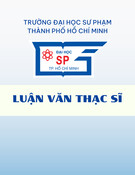


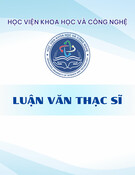

![Luận văn Thạc sĩ: Tổng hợp và đánh giá hoạt tính chống ung thư của hợp chất lai chứa tetrahydro-β-carboline và imidazo[1,5-a]pyridine](https://cdn.tailieu.vn/images/document/thumbnail/2025/20250807/kimphuong1001/135x160/50321754536913.jpg)
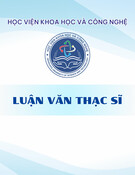

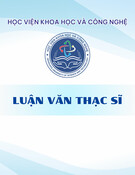
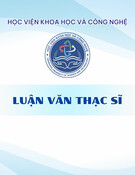



![Đề án Thạc sĩ: Tổ chức hoạt động văn hóa cho sinh viên Trường Cao đẳng Du lịch Hà Nội [Chuẩn nhất]](https://cdn.tailieu.vn/images/document/thumbnail/2025/20251202/kimphuong1001/135x160/91661764646353.jpg)


